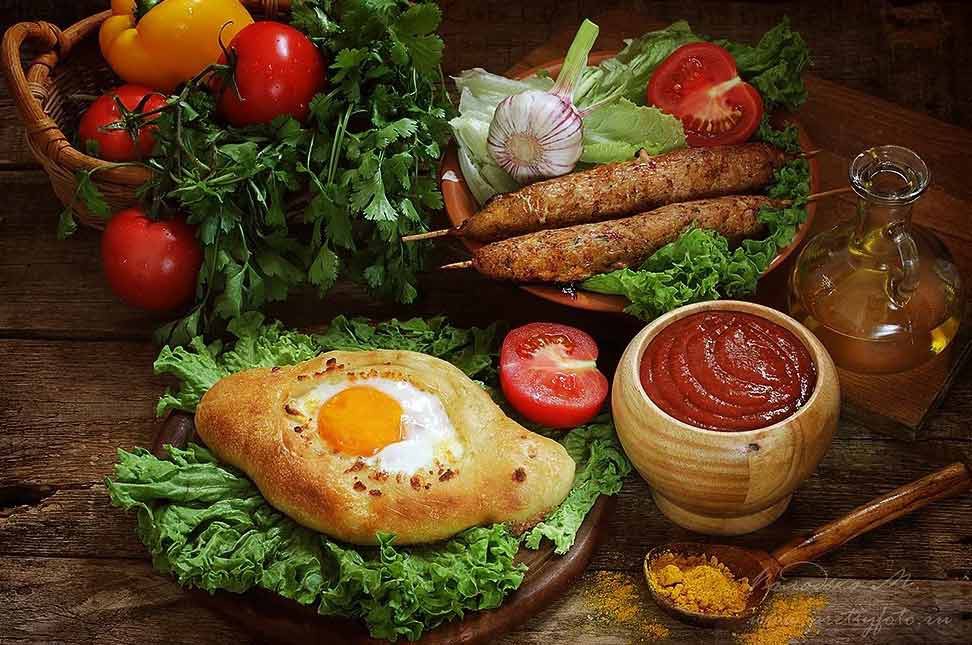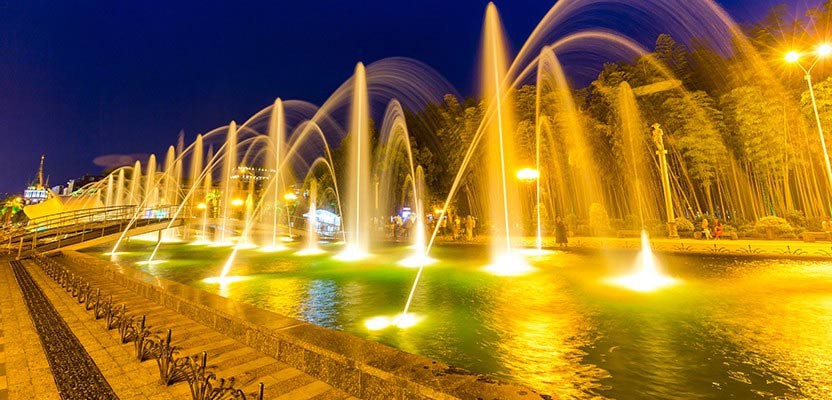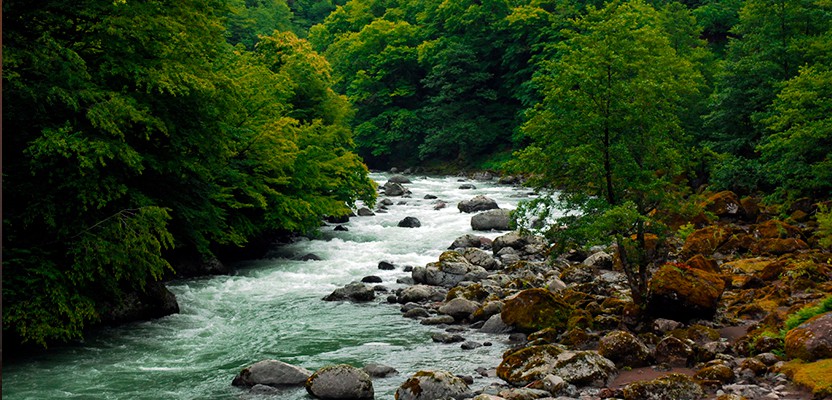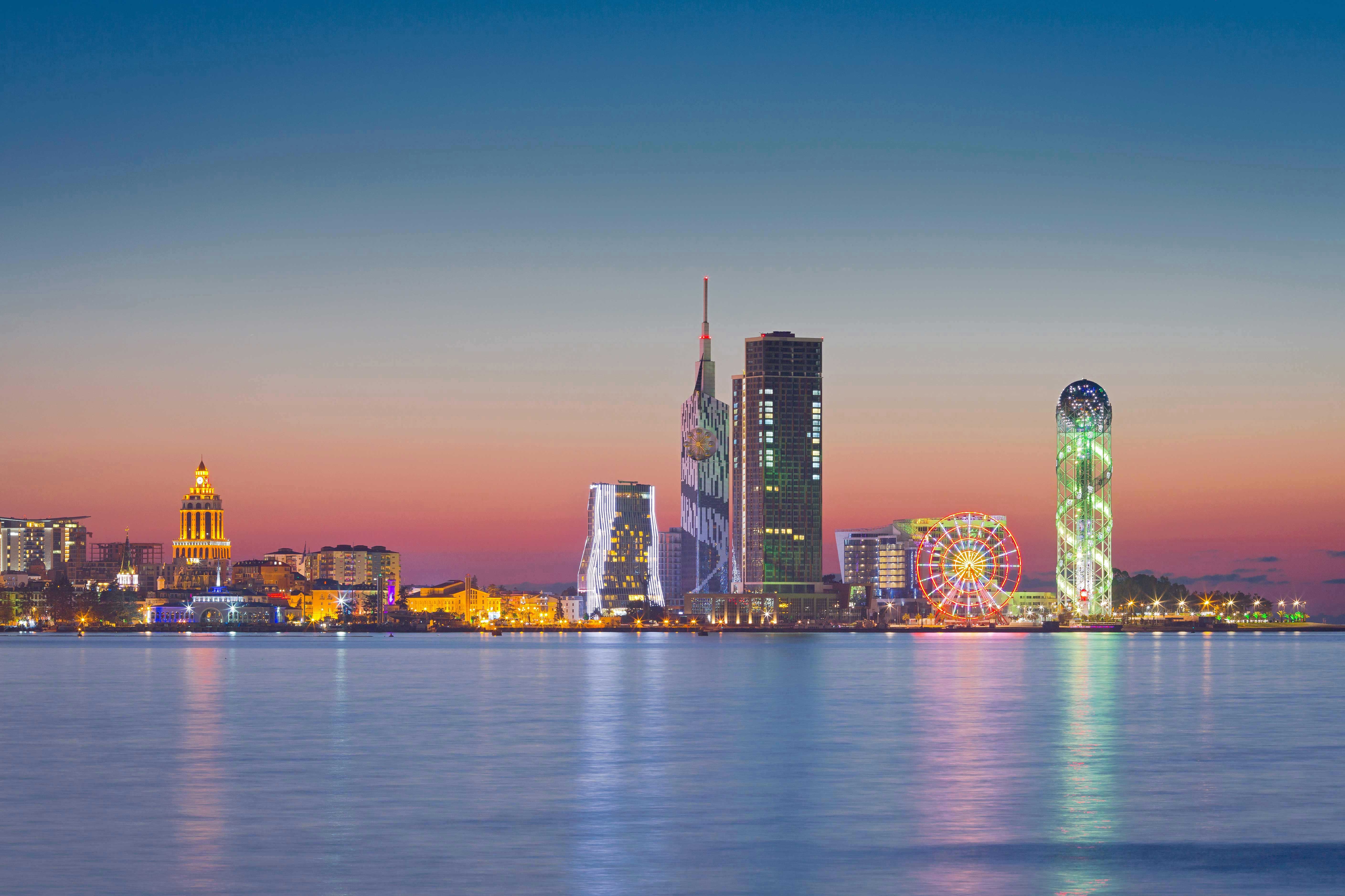12 km south to Batumi city, on the left embankment of river Chorokhi, Gonio-Apsaros fortress is located which dates to the I century A.D. One of the oldest settlements in Georgia existed around this fortress. Gonio-Apsaros fortress had unique strategic function and protected entrances to Chorokhi and Acharistskali river valleys that connected South-West Georgia to the Black Sea coast. Due to its favourable location, Gonio fortress became the citadel of Roman Empire, later of Byzantium and then the Ottoman stronghold in Eastern Black Sea region.
Gonio-Apsaros history is closely linked to the myth of Argonauts. It is widely known that the King Aeetes buried his son Apsaros there after he was killed by the escapee Jason. According to the legend, one of Christs 12 disciples-Matatha is buried there as well.
Petra fortress has seen many wars. Remnants of the fortress, the castle and soldier housing are still maintained besides VI-VII century basilica foundation which served as Petra’s episcopal seat. As a result of the excavation, a rich tomb was discovered here with a crystal placed in the golden framing. The item is kept in Hermitage at present. The studies of the unearthed treasure revealed that in the first centuries A.D. Petra fortress was the residential seat of Eristavi royalty.
If historical artefacts are things of your interest that Batumi Archaeological Museum is for you. There you can examine ancient cultural monuments that were unearthed on the territory of Adjara. In 2007, a permanent popular science exhibition was opened. It introduces visitors to the ancient history epochs. Since 1998, the joint expedition of Batumi Archaeological Museum and Oxford University Ashmolean Museum enriched the museum with new artefacts.
ETHNOGRAPHIC MUSEUM ‘BORJGALO’
Folk crafts and lifestyle museum which was created and founded by the native of upper Adjara, Kemal Turmanidze, is today the ethnographic museum which covers 3,000 m2. Once you get to the museum, you plunge into the old Georgian traditions. Pottery, metal, stone and wood processing, beekeeping, fruit farming, viticulture and agriculture is displayed at the level of the work process. Mannequins dressed in traditional attire, props, folk music – all this paraphernalia will animate your imagination. You can find residential, worship and agricultural buildings here too, both in the form of small models and in life-size.
Niko Pirosmani, Lado Gudiashvili, Gigo Gabashvili, Davit Kakabazdze, Elene Akhvlediani, Merab Berdzenishvili, Rusudan Petviashvili – these names are only a small part of world-renowned Georgian painters whose works are presented in Adjara Museum of Arts. The museum building itself is a work of art and one of Batumi’s historical buildings on top of it all.
Adjara Museum of Arts hosts personal, group and retrospective exhibitions as well as music and theatrical performances.
KHARITON AKHVLEDIANI STATE MUSEUM
Khariton Akhvlediani Adjara State Museum is one of the oldest museums in Georgia. It was founded in 1908 after Batumi city council approved the initiative of then Pushkin school teachers and decided to open a museum for children. The renowned scientist and public figure, Khariton Akhvlediani served as the Head of the museum in 1938-1989. This interesting museum invites visitors to three places at once: Mehmed Abashidze museum-He was a respected persona in Georgia; Personal items, documents and photos of t. Ilia Chavchavadze, Georgia’s greatest public figure; and a science library where a rich fund of old books is represented.
THE NOBEL BROTHERS BATUMI TECHNOLOGICAL MUSEUM
This museum is set up in the same building where Nobel brothers’ crude oil refinery partnership ‘Batumi Kantora’ was located around a century ago. Up to 2,000 museum exhibits depict the examples of technological innovation introduced by Nobel brothers, Rothschilds and Mantashev in Batumi, at the end of XIX and in the beginning of XX centuries. These technological artefacts mainly represent tea, tobacco and printing development dynamics in Georgia. At that time, Nobel brothers also introduced latest technologies for oil transit in Batumi.
ILIA CHAVCHAVADZE MUSEUM
Another museum worth your visit is the museum of Ilia Chavchavadze, who was one of the most distinguished sons of Georgian nation, later sanctified and declared a saint by the Georgian Orthodox Church. The writer, the publicist, the philanthropist, the public figure and the leader of Georgian national-liberation movement was shot and killed in 1907 by the opponents of the liberation of Georgia.
The museum was opened in Batumi in 2001 where you can examine personal belongings of Ilia Chavchavadze and his Adjarian peers. There are 289 exhibits kept in the museum, including a table, a closet, small and big samovars (tea-kettles), a sewing machine belonging to Ilia’s wife, Olga Guramishvili and many other items.
CONTEMPORARY ART SPACE OF BATUMI
The Contemporary Art Space is the inseparable part of Batumi cultural life. This is the place where screenings of world’s leading directors take place as well as best photo exhibitions, various workshops and seminars.
International Print Festival ‘Life N Style’ which displayed unique technologies of hand printing, was held here in 2016.
BATUMI ILIA CHAVCHAVADZE STATE THEATRE OF DRAMA
Batumi Theatre of Drama which opened its doors in 1952 (Architect I. Teplitski) was named after Ilia Chavchavadze seven years later. The first theatre performance ever staged in Batumi dates back to 1879
when Zurab Antonov’s play “Has the Uncle Married?’ was performed by amateur stage actors. The venture was initiated by Batumi Policemeister’s wife, Ketevan Zhuruli.
Like in other theatres of Georgia, plays were held for charity here. Those engaged in the drama art moved from building to building but hardly ever lacked the attention of the audience.
BATUMI PUPPET AND YOUTH PROFESSIONAL STATE THEATRE
Since January 14, 2016, Batumi Puppet and Youth Theatre has resumed its creative activities in the reconstructed building. With supplementary floor and a summer hall added to the main structure, this historic building bears the status of the monument of cultural heritage.
The institution was involved in numerous collaborations with painters and composers. Its programs were enriched and developed year by year.
KHULO PROFESSIONAL DRAMA THEATRE
The history of this Khulo Professional Drama Theatre goes back to 1925 and is closely linked to the name of Georgian cinematographer, Siko Dolidze. It was under his supervision that enthusiasts started to perform in Khulo. Then came a drama troupe, later a public theatre followed which mainly fed off Georgian dramaturgy. The theatre acquired the status of state drama institution in 1992. In 2016 Khulo Theatre performed in Athens (Greece) and in summer 2017 presented the play ‘Anti-Antigone’ on the Poti International Festival for Regional Theatres.
Heroes’ square is one more expression of modern Batumi. Here you can find House of Justice opened on May 26, 2011 in celebration of Independence Day of Georgia. The author of the project is an Italian architect Michele De Lucchi. In the center of the square there is a modern and original sculpture "Rotation" by Tamar Kvesitadze. She is also the author of Ali and Nino, one of the symbols of Batumi. In few steps from the square you can visit French Musical Fountains functioning on Ardagani Lake since 2009. In the evening the fountain presents a real theater performance with an impressive laser show.
“Dancing fountains “is one of the most memorable sightseeing of Batumi, opened in 1977 year. The author of the fountains is famous Georgian architect Erkomaishvili. Unforgettable fountain show is unfolding in the front of visitor’s eyes from the entrance of boulevard. In sunny days A rhythmic flow of water draws amazing and intricate patterns.
The idea to construct Colonnades in Batumi belongs to the local doctor Ivane Mchedlidze. He brought the project with him in 1933-1934 from a professional trip to Sorrento city, Italy. The project was completed under the supervision of Bogdan Kirakosyan, an architect from Batumi. This structure used to serve as a gate to the seashore which used to be closer to it than today. Years later, the shoreline receded and the sea moved back further from the construction. Despite this, colonnades remain one of Batumi’s most frequented landmarks and a popular meeting place in the city. You will meet similar colonnades at the entrance of Batumi Central Park.
On the Europe Square stands the statue of Medea, princess of Colchis. Created by Davit Khmaladze, the monument symbolizes the wealth and strength of the country. According to antique mythology the youngest daughter of Aeets the legendary king of Colchis fell in love with the leader of Argonauts’ crew, Jason, and helped him to steal the golden fleece. Medea had in-depth knowledge of herbs and possessed healing gifts. As the legend has it, she could rejuvenate a person which is why Medea was perceived as a goddess and temples were dedicated to her. The term ‘Medicine’ originates from the name – Medea.










